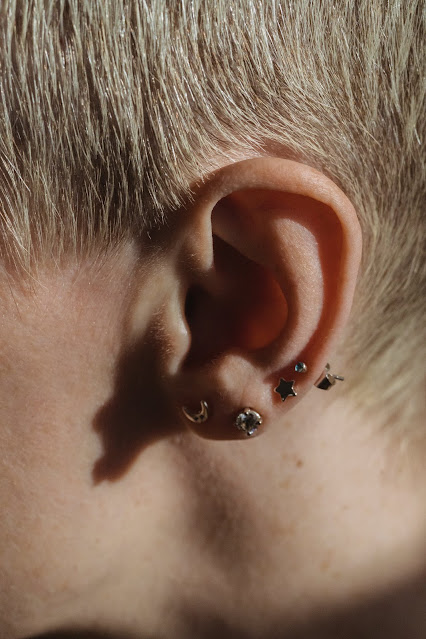![]() The practice of piercing ears is ancient and has a rich history that spans various cultures and civilizations throughout the world. It has served numerous purposes, ranging from religious and cultural significance to aesthetics and personal expression. While it is challenging to pinpoint the exact origin of ear piercing, archaeological evidence and historical records offer insights into its long-standing tradition.
The practice of piercing ears is ancient and has a rich history that spans various cultures and civilizations throughout the world. It has served numerous purposes, ranging from religious and cultural significance to aesthetics and personal expression. While it is challenging to pinpoint the exact origin of ear piercing, archaeological evidence and historical records offer insights into its long-standing tradition.
Ancient Civilizations: Ear piercing dates back thousands of years and was prevalent in ancient civilizations such as Mesopotamia, Egypt, Greece, and Rome. Archaeological findings, including artifacts and images, suggest that both men and women in these societies adorned their ears with earrings made from various materials, including gold, silver, and precious stones.
Religious and Cultural Significance: Ear piercing held religious and cultural significance in many ancient societies. For example, in ancient Egypt, earrings symbolized wealth and status, and the practice of ear piercing was associated with the worship of gods and protection from evil spirits. In other cultures, earrings were worn to signify a person's tribe, social rank, or marital status.
Healing and Medicinal Beliefs: In some cultures, ear piercing was believed to have medicinal properties. It was thought that piercing specific points on the ear could alleviate certain health issues, similar to the concept of acupuncture or acupressure.
Seafaring Tradition: In maritime cultures, ear piercing was common among sailors. It was believed that wearing gold earrings could improve eyesight and enhance one's sense of direction, making it a practical choice for sailors who spent long periods at sea.
Personal Expression and Fashion: Over time, ear piercing became more closely associated with personal expression and aesthetics. Earrings allowed individuals to showcase their style, creativity, and identity. Different earring designs and materials were used to represent cultural affiliations or simply reflect personal preferences.
Royal and Elite Adornments: In many societies, wearing earrings was reserved for royalty, nobility, or the elite class. Earrings became a symbol of wealth and power, and their designs often reflected the wearer's status and influence.
Spread of Ear Piercing Worldwide: As trade and cultural exchange flourished, the practice of ear piercing spread to different parts of the world through interactions between civilizations. This contributed to the widespread adoption of ear piercing as a global fashion and cultural phenomenon.
Today, ear piercing remains a popular form of body modification and self-expression. It is widely practiced across various cultures and has become a standard practice in many societies, with professional piercers using specialized equipment and techniques to ensure safe and hygienic procedures. From traditional studs to elaborate ear cuffs, earrings continue to be a timeless and versatile accessory, embraced by people of diverse backgrounds and tastes.
Source: Some or all of the content was generated using an AI language model


No comments:
Post a Comment
Contact The Wizard!
(he/him)